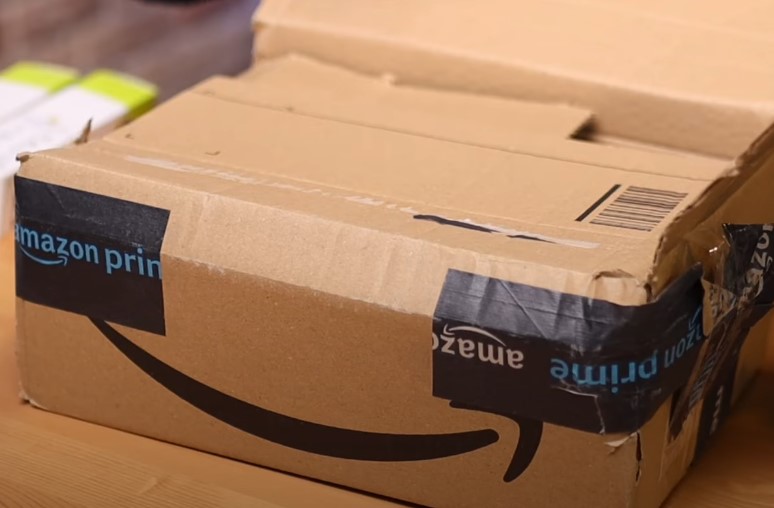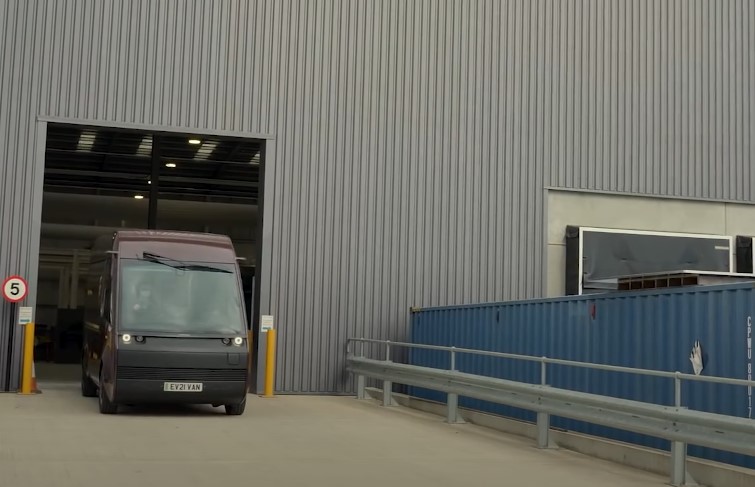The fastest and most reliable way to speed up Amazon FBA check-in times without sacrificing quality is to optimize your prep and labeling before shipment, send inventory to the right Amazon fulfillment centers, and provide accurate, complete shipment documentation.
This means ensuring every unit arrives ready for stowing, free of prep errors, with scannable barcodes, correct box contents information, and compliant packaging. When shipments arrive fully compliant and matched with Amazon’s receiving standards, they skip the rework queue, which is often the biggest source of delays.
By refining your processes before inventory even leaves your facility, you can cut check-in times from 10–14 days down to as little as 2–5 days in many cases, depending on Amazon warehouse load. The goal is to make your shipment “friction-free” for Amazon staff, requiring no extra handling, corrections, or inventory investigations.
Understand the Check-In Process to Target Bottlenecks

Amazon FBA check-in consists of arrival, unloading, sorting, scanning, and stowing. Most delays happen between sorting and scanning when shipments are flagged for prep issues or mismatched documentation. Knowing exactly where delays occur allows you to address them before they happen.
| Stage in Check-In | What Happens | Common Cause of Delays | Fix |
| Arrival | Shipment reaches FC | Carrier backlog or wrong FC assignment | Use Amazon-partnered carriers and assign the correct FC |
| Unloading | Pallets/cartons are unloaded | Poor palletization or non-standard boxes | Follow Amazon pallet/box guidelines strictly |
| Sorting | Units routed to receiving lanes | Mixed SKUs without box content labels | Provide accurate box contents in Seller Central |
| Scanning | Barcodes scanned into the system | Missing/unclear barcodes, prep issues | Apply the FNSKU or the manufacturer barcode cleanly |
| Stowing | Items placed into storage bins | Prep violations, damaged goods | Use compliant, protective packaging |
Ship to the Right Fulfillment Centers
One of the fastest ways to reduce check-in delays is shipping inventory directly to the FCs that can process your products fastest. Amazon’s default shipment splitting can sometimes route goods to slower or overcapacity centers.
- Use the Inventory Placement Service if your volume justifies the fee, so you can send to fewer FCs.
- Analyze your historical data in Amazon Shipment Performance reports to see which FCs consistently check in faster.
- Avoid shipping peak volumes into historically congested FCs like FTW1 or ONT8 during Q4.
Prep and Label to Amazon Standards Every Time

The number one cause of FBA receiving delays is non-compliant prep. If Amazon has to bag, label, or repackage your items, your shipment goes to the Unplanned Services queue, which can add 7–14 days to processing.
Prep essentials:
- Apply FNSKU labels directly over manufacturer barcodes, no wrinkles or smudges.
- Use poly bags with suffocation warnings for loose items.
- Seal all cartons securely and meet box weight limits (no more than 50 lbs unless a single-item exception applies).
- Avoid overstuffed boxes, which can slow down unloading and sorting.
Provide Accurate Box Content Information
When you skip box content information in Seller Central, Amazon must open and scan every single unit manually, which can double the check-in time. Accurate box content uploads allow Amazon to scan just the box’s unique label.
Best practice:
- Use Amazon’s 2D box content labels (generated in Seller Central or via your shipping software).
- Double-check quantities and SKUs before finalizing shipment to avoid discrepancies.
| Box Content Method | Impact on Check-In Time | Risk of Error |
| No box content info | +3–7 days delay | Low, but slows the process |
| Manual entry per box | +1–2 days | Medium |
| 2D barcode label | Fastest (no extra handling) | Low if verified before shipping |
Optimize Palletization and Carton Standards

How your shipment is palletized or boxed can make or break your check-in time. Amazon’s receiving teams work on speed and efficiency, and if your pallets don’t fit the standard specs, they either have to be reworked on-site or pushed aside until someone has time to handle them. Both situations can add multiple days to processing.
For pallet shipments, Amazon requires 40″ x 48″ standard GMA pallets that are sturdy, undamaged, and not odd-sized. Damaged or non-standard pallets slow unloading because forklifts cannot handle them as quickly.
Boxes should be stacked evenly without overhang, and the pallet should be shrink-wrapped tightly to prevent movement during transit. Pallet labels must be placed on all four sides at eye level so they are visible from any angle on the dock. If you’re shipping multiple SKUs on the same pallet, make sure cartons containing the same SKU are grouped in layers so sorting is quick.
For carton shipments (especially smaller quantities sent via UPS or SPD), each box should be securely taped, not bulging, and within the weight limit of 50 lbs, unless it’s a single oversized unit. Boxes that are overpacked, misshapen, or have mixed SKUs without proper box content labels are far more likely to get flagged for manual handling. Remember, the goal is to make your shipment easy for Amazon to move from the truck to the storage location with as little intervention as possible.
Time Shipments Strategically
View this post on Instagram
Even if your shipments are perfectly prepped, bad timing can destroy check-in speed. Amazon fulfillment centers experience significant fluctuations in inbound traffic, and sending a truckload into an already overloaded facility means your boxes could sit for days before even being touched.
Peak congestion typically happens in three main periods: Q4 holiday season (especially November–mid-December), Prime Day preparation (May–July), and the post-holiday returns wave in late January. During these times, even compliant shipments can get stuck in receiving queues simply due to the volume coming in. The solution is to stagger shipments and plan your sending windows around lower-volume periods.
If you’re shipping by truckload, coordinate with your carrier to ensure weekday morning deliveries; these tend to get processed faster than Friday arrivals, which can sit over the weekend. Sellers using FTL shipping (full truckload) have an advantage because Amazon can unload an entire trailer in one go, rather than handling multiple small shipments mixed. When paired with correct scheduling through Amazon’s Carrier Appointment Request Portal, FTL shipments often get docked, unloaded, and staged for check-in in a single shift.
Use a Reliable Prep Center for Scaling
As your sales grow, maintaining perfect prep quality in-house becomes harder. Small errors—like a missing FNSKU, an unsealed poly bag, or a box exceeding weight limits- can have a disproportionate effect on check-in times, especially if you’re sending large volumes. This is where a professional prep center can save you both time and headaches.
A good Amazon-compliant prep center ensures that every unit is ready to be stowed immediately upon arrival at the fulfillment center. They handle barcode application, poly bagging, bubble wrapping, and box content uploads with precision, ensuring no surprises upon receipt. Many prep centers also have systems to monitor which FCs your goods are going to and can adjust your routing to avoid slower warehouses.
This is particularly important for sellers who use multiple suppliers or overseas manufacturing, as prep centers can receive bulk shipments, perform quality checks, and repackage goods to meet Amazon’s requirements before sending them in.
If you’re shipping from overseas, consider sending directly from the port to your prep center, rather than Amazon, so you have full control over compliance. Sellers who skip this step often see longer delays because Amazon is forced to fix prep mistakes on its end.
Track and Analyze Receiving Performance
If you aren’t tracking how long your shipments take to check in, you’re essentially flying blind. Amazon provides inbound performance reports in Seller Central, and these are gold for understanding where your delays happen. Look at how many days it takes from arrival at the FC to inventory becoming available for sale. If you see consistent lag times at certain FCs, you can work with your prep center, carrier, or Amazon support to adjust routing.
You should also monitor which shipments trigger investigation cases, often caused by SKU count mismatches or missing box content data. By identifying these patterns, you can address the root cause and prevent them from repeating. For example, if shipments routed to a certain FC are taking 8 days while others are done in 3, the issue might be timing (arriving during a high-volume period), FC congestion, or a prep inconsistency unique to those loads.
Keeping your spreadsheet or dashboard of shipment performance can be even more effective than relying solely on Amazon’s reports. Many advanced sellers include data points like carrier transit time, dock-to-stow time, and error type for each inbound load. This way, you’re not only reacting to delays, you’re proactively shaping your process to eliminate them.
Final Takeaway
You can’t control Amazon’s internal workload, but you can control how “receiving-friendly” your shipments are, even Jeff Bezos said it. The fastest check-ins come from shipments that:
- Arrive at the right FCs
- They are fully prepped and labeled according to standards
- Include perfectly accurate box content data
- Arrive during lower inbound volume periods
When these four factors are consistent, FBA check-in times can shrink from over a week to just a few days, without sacrificing product quality or compliance.


